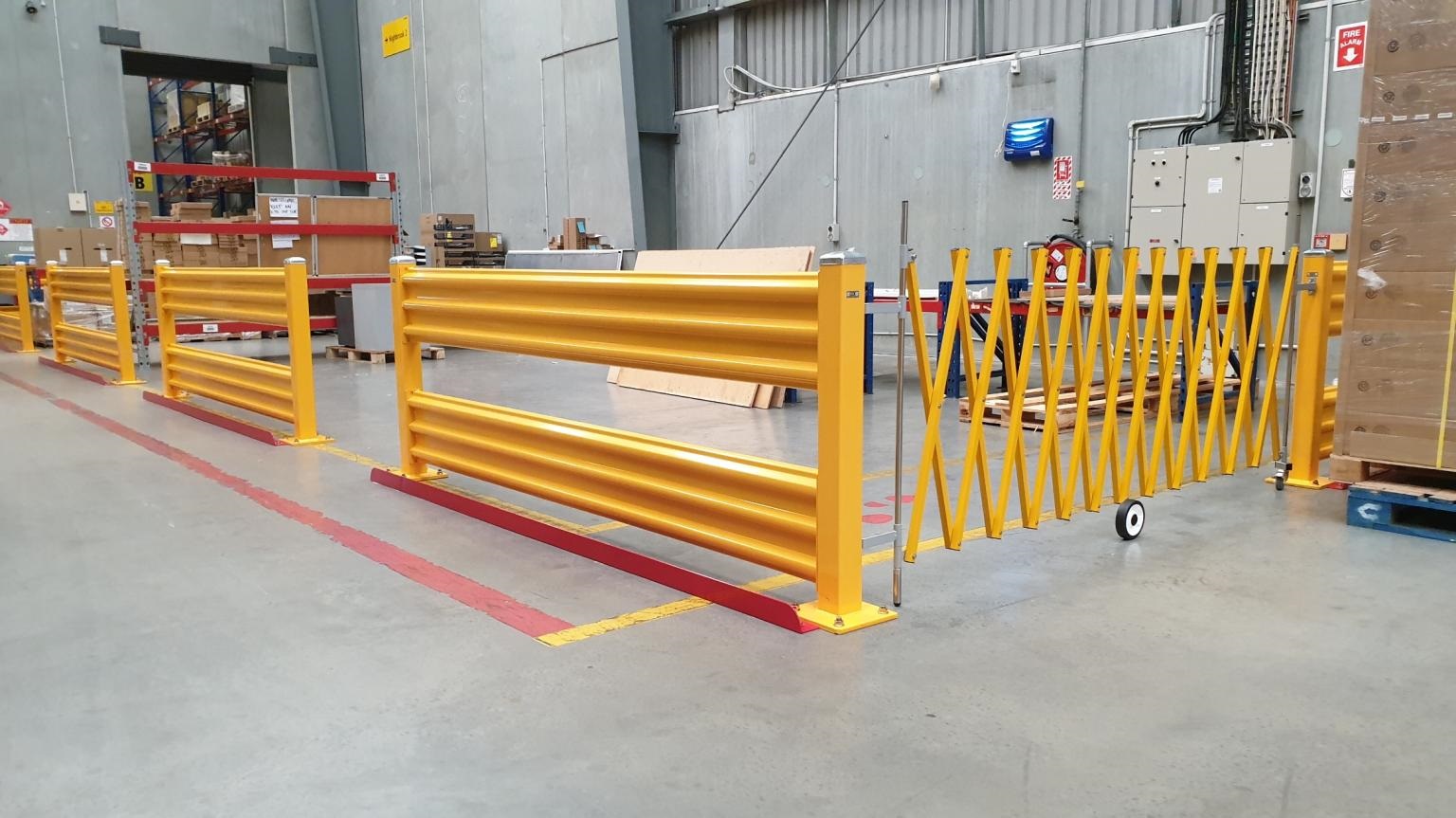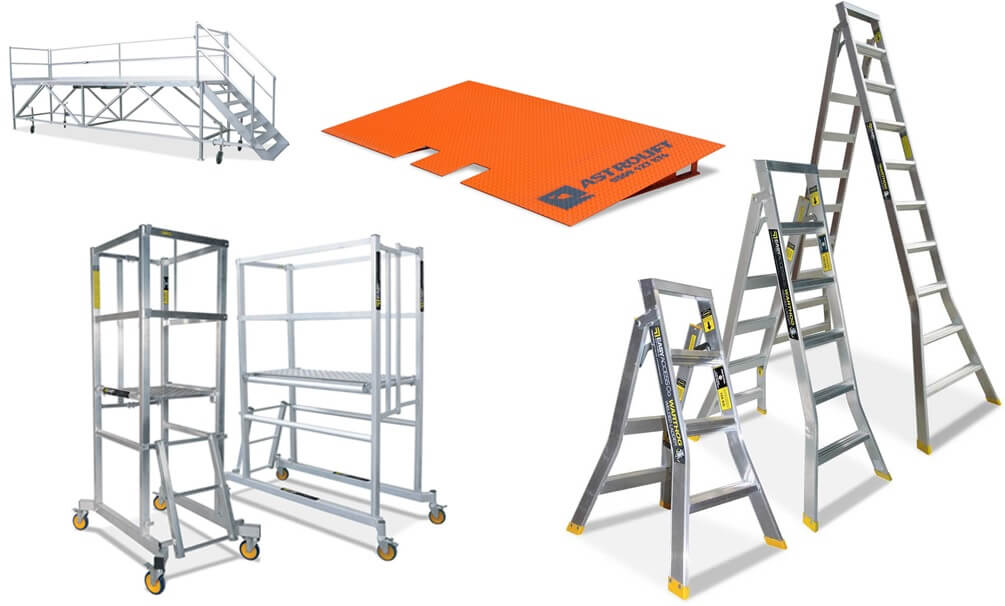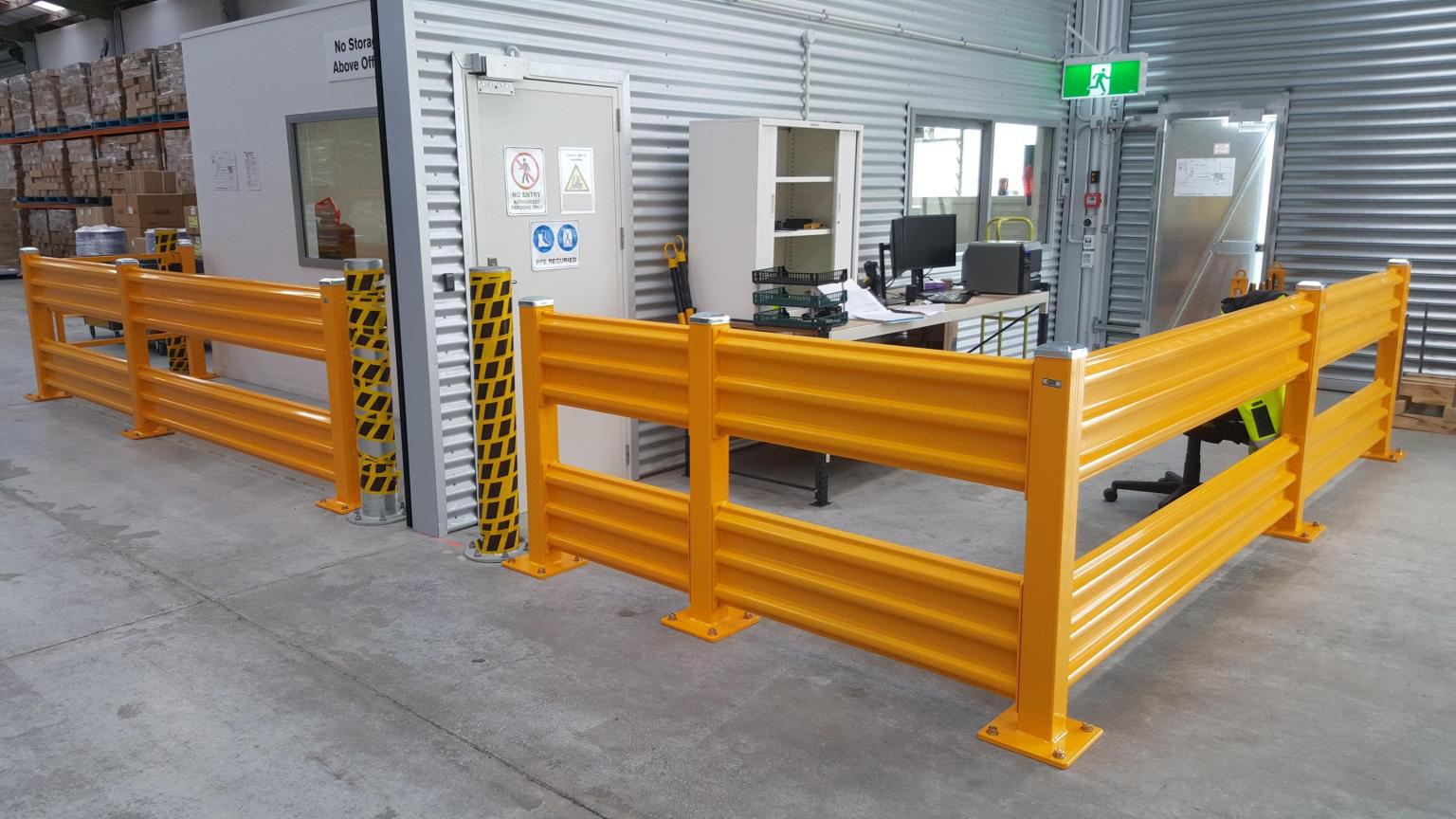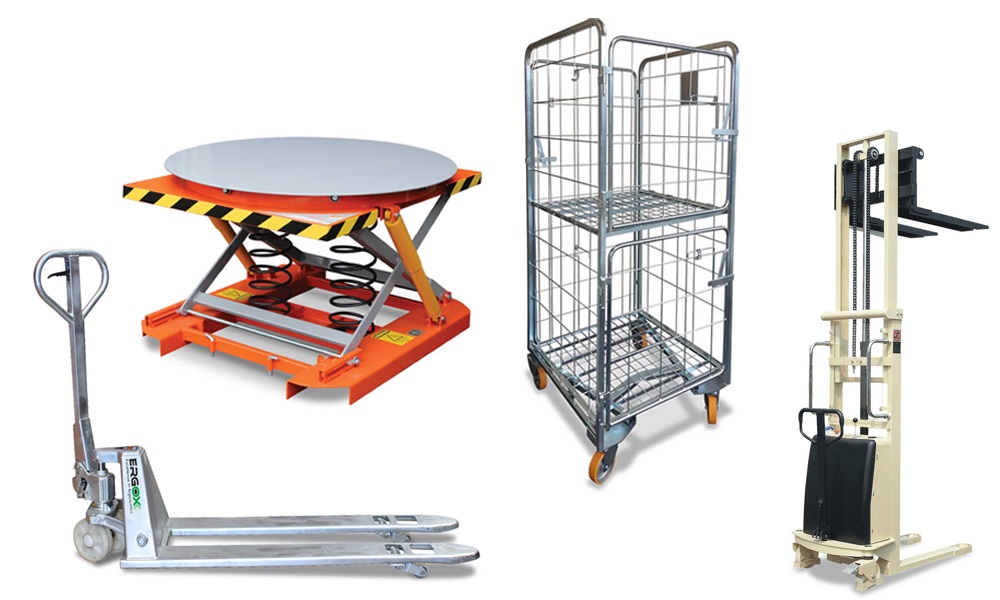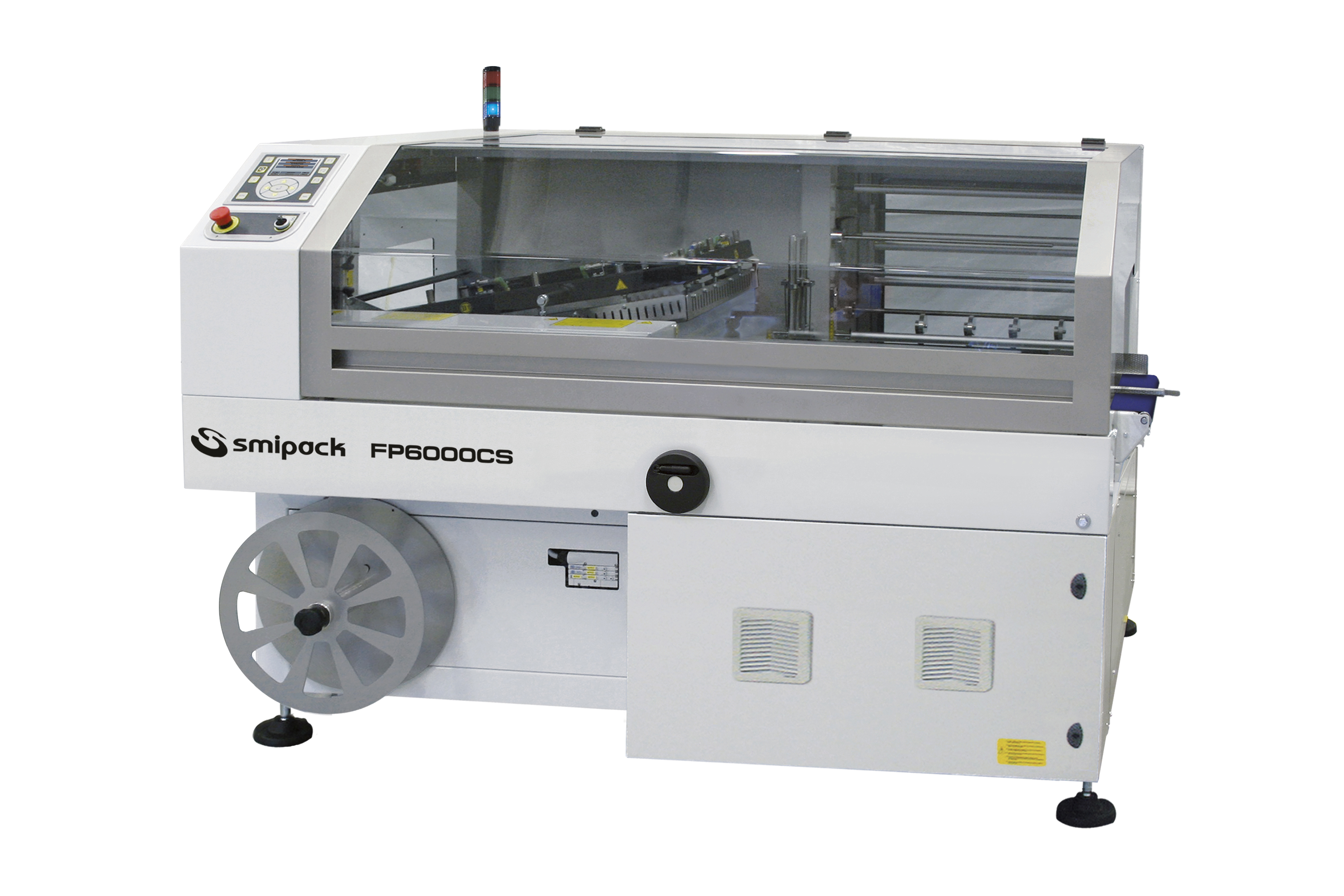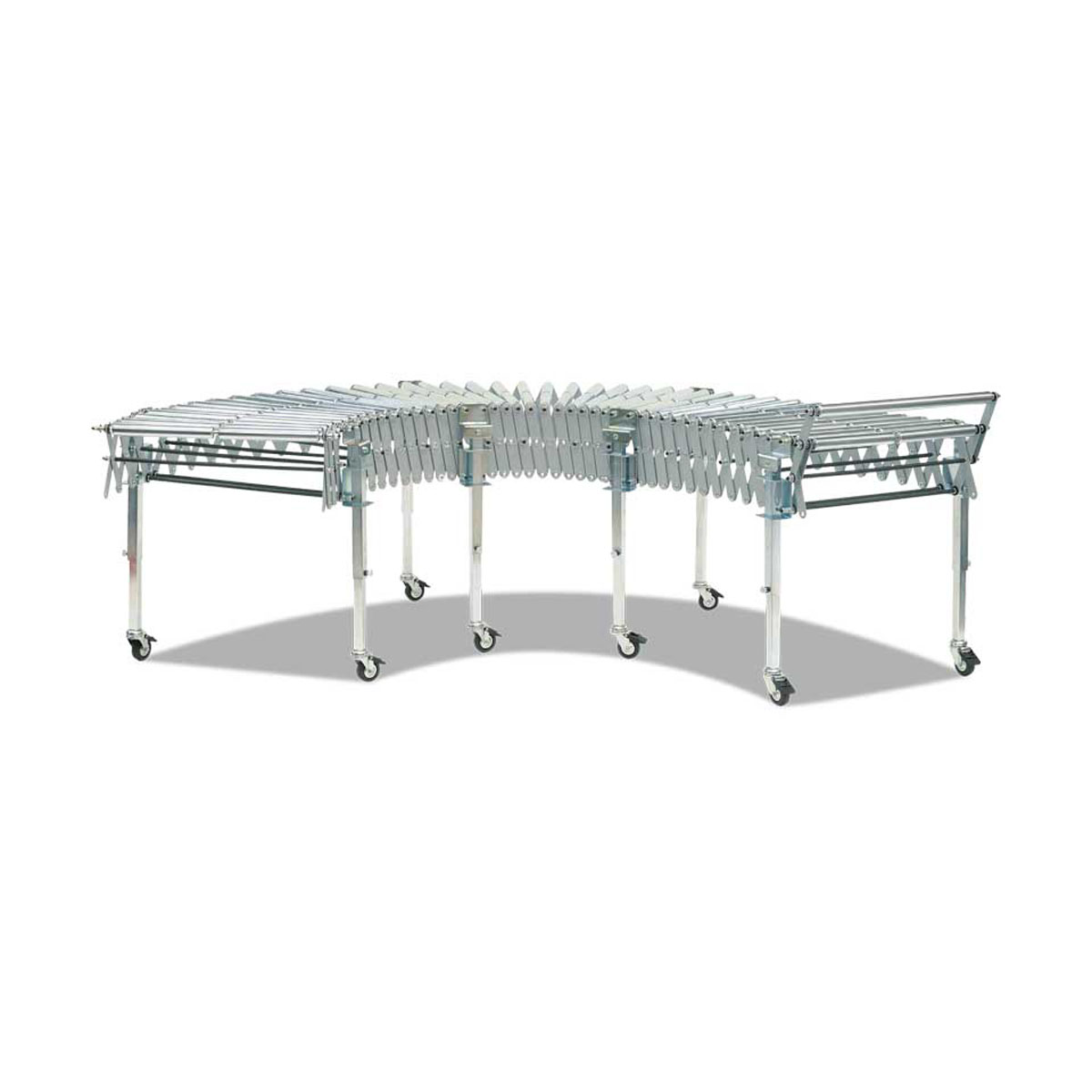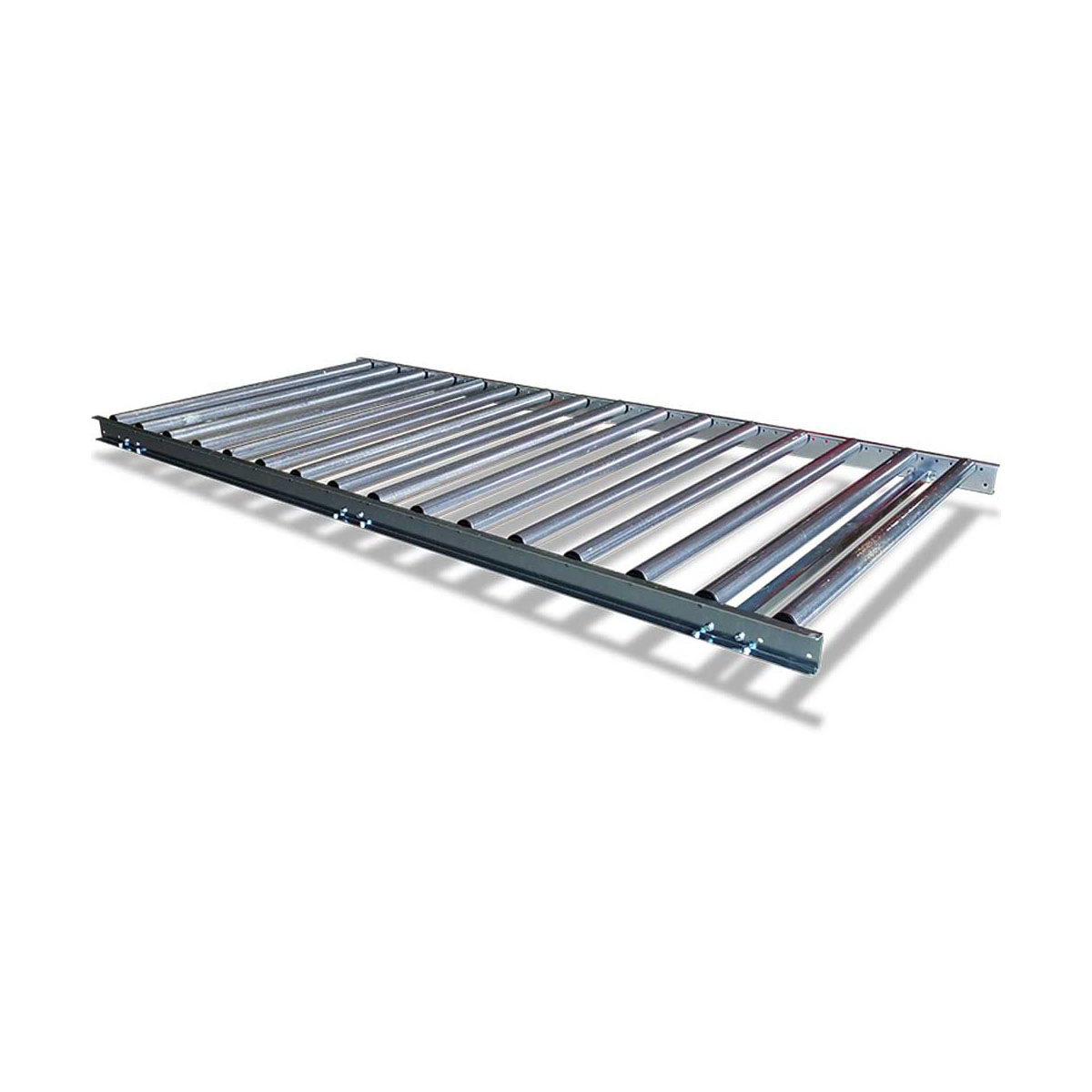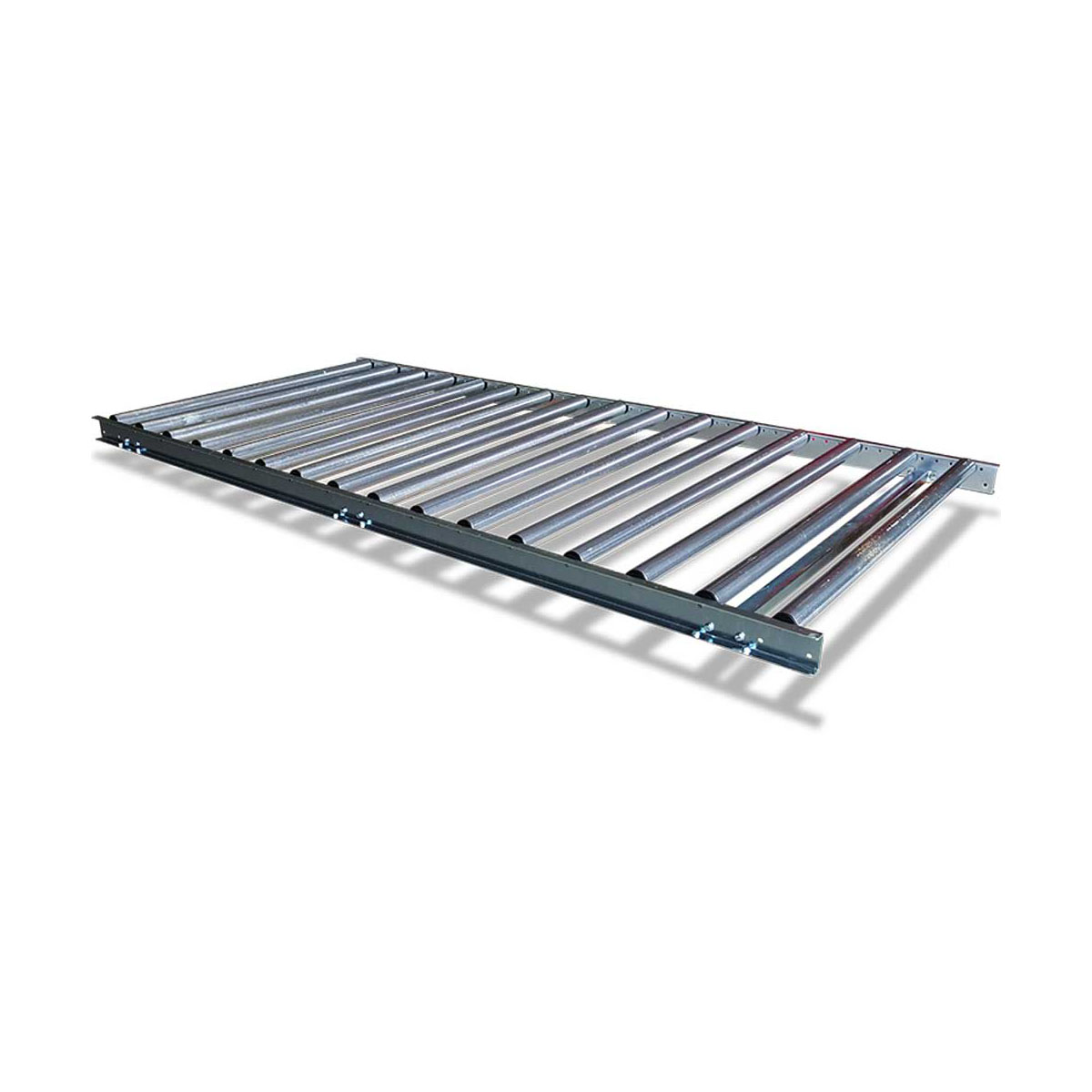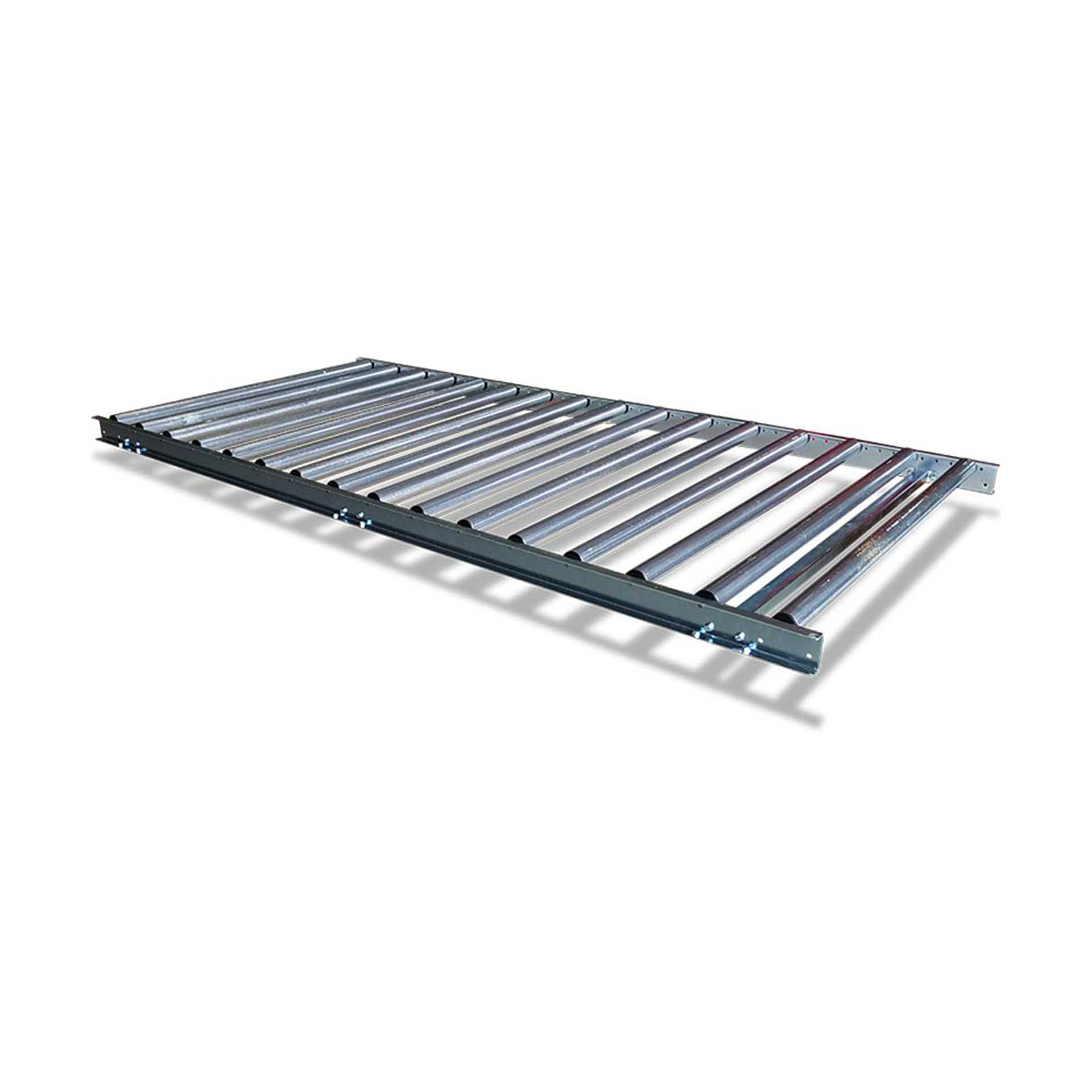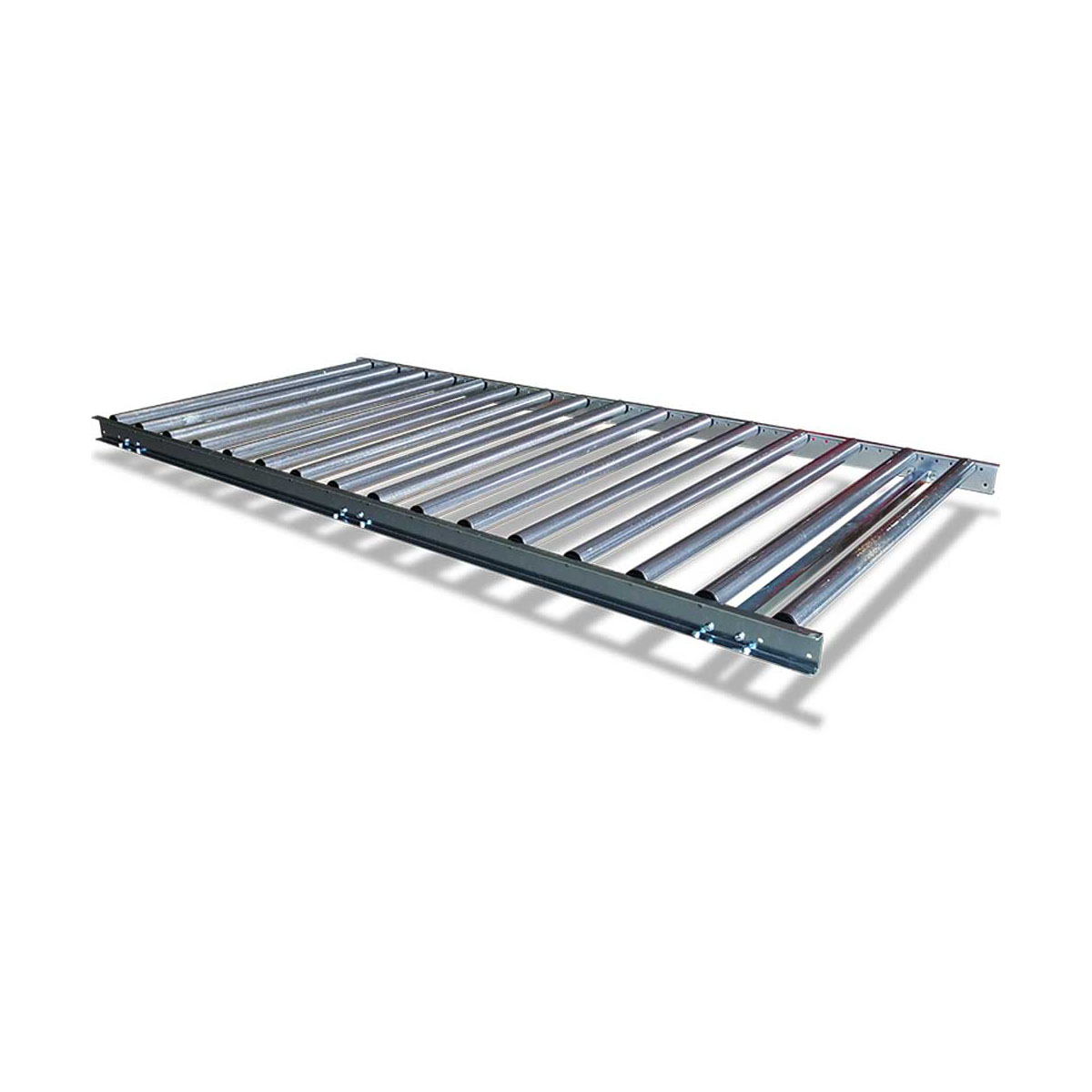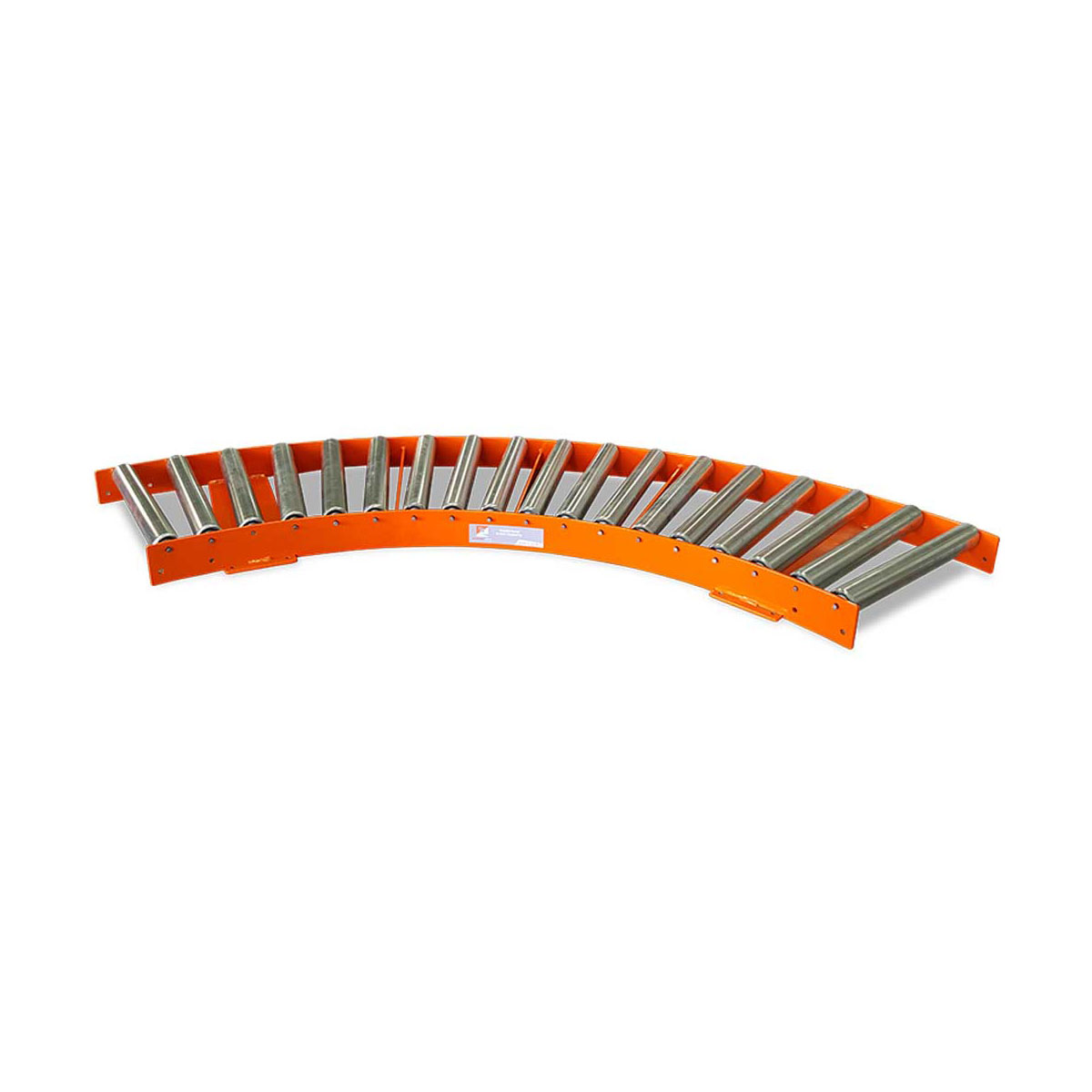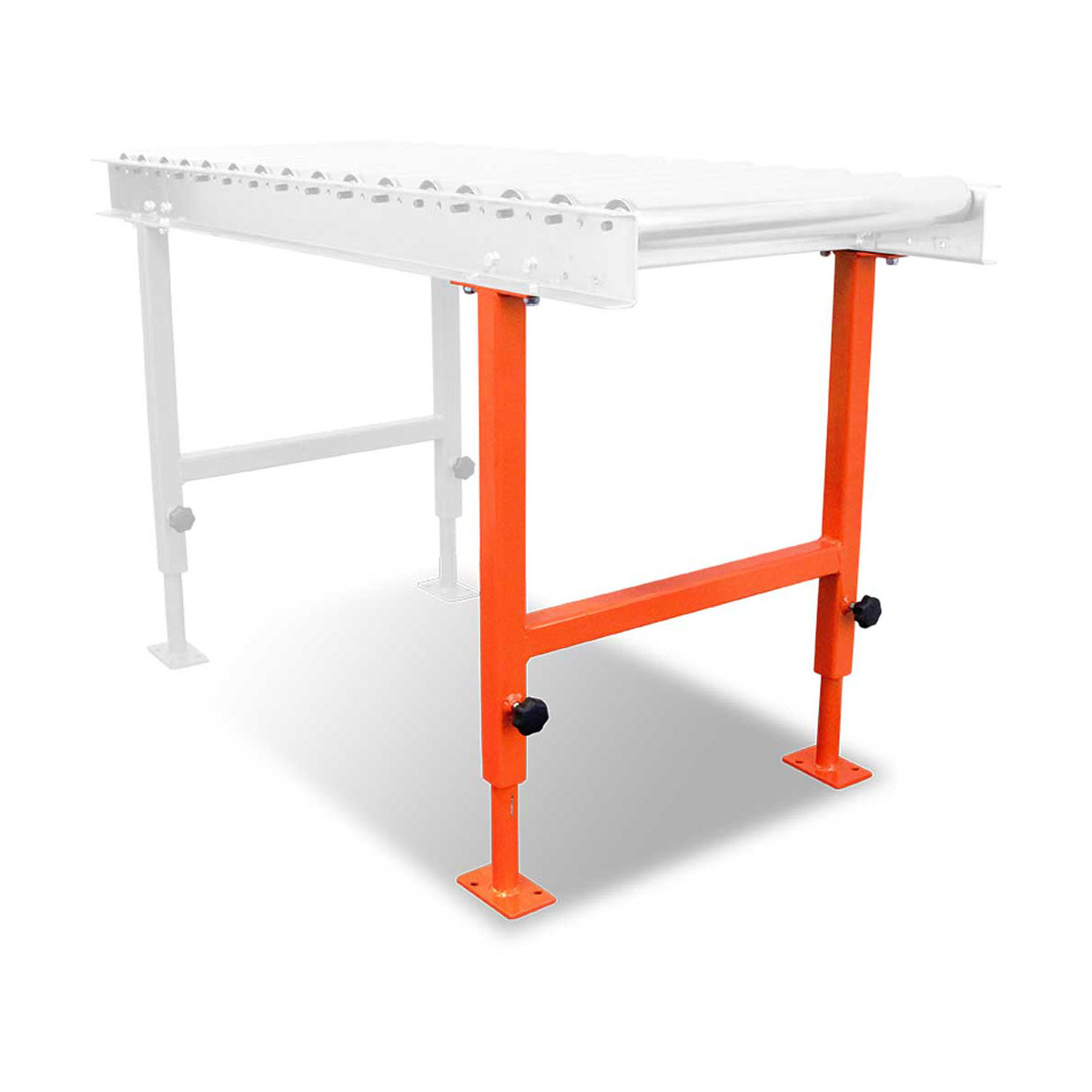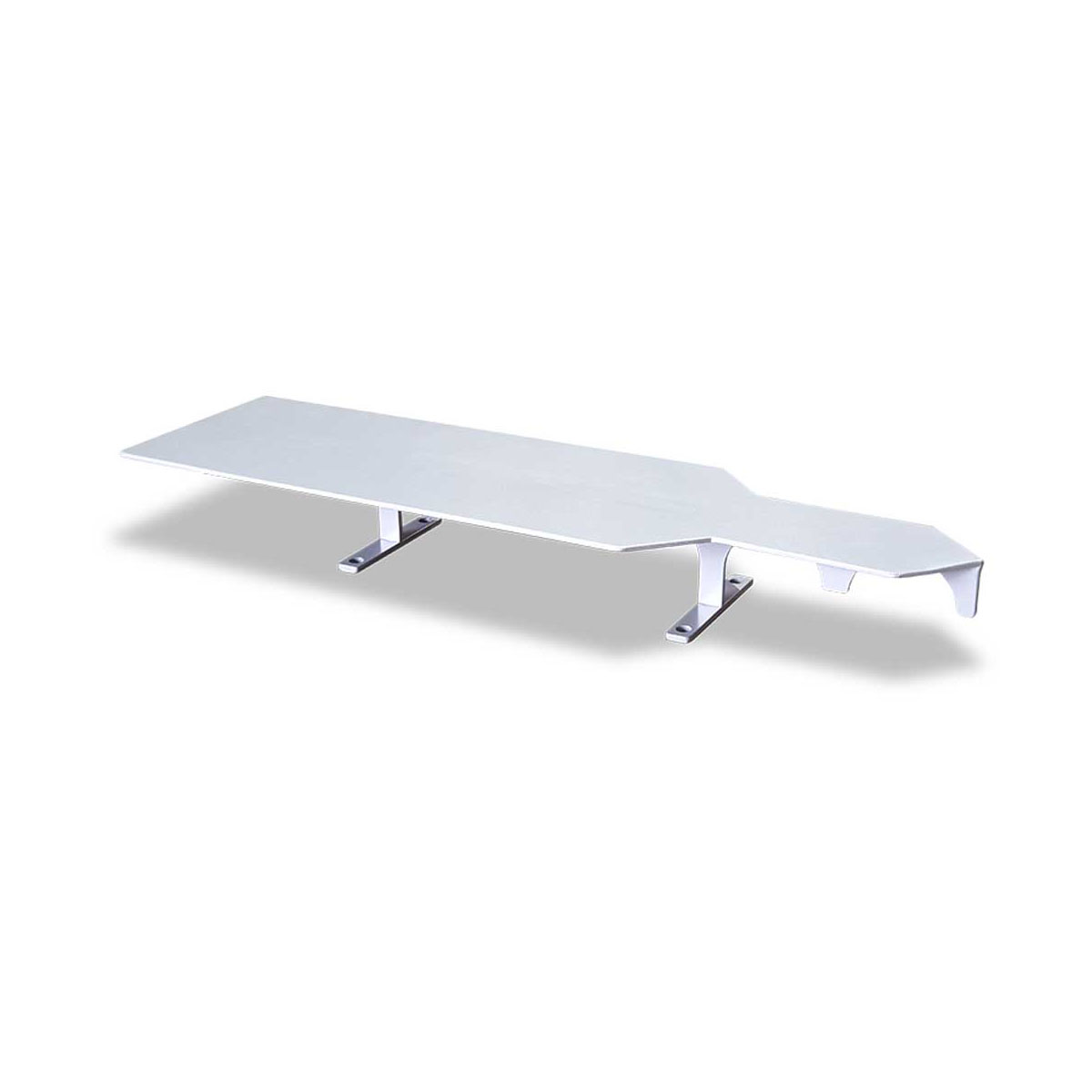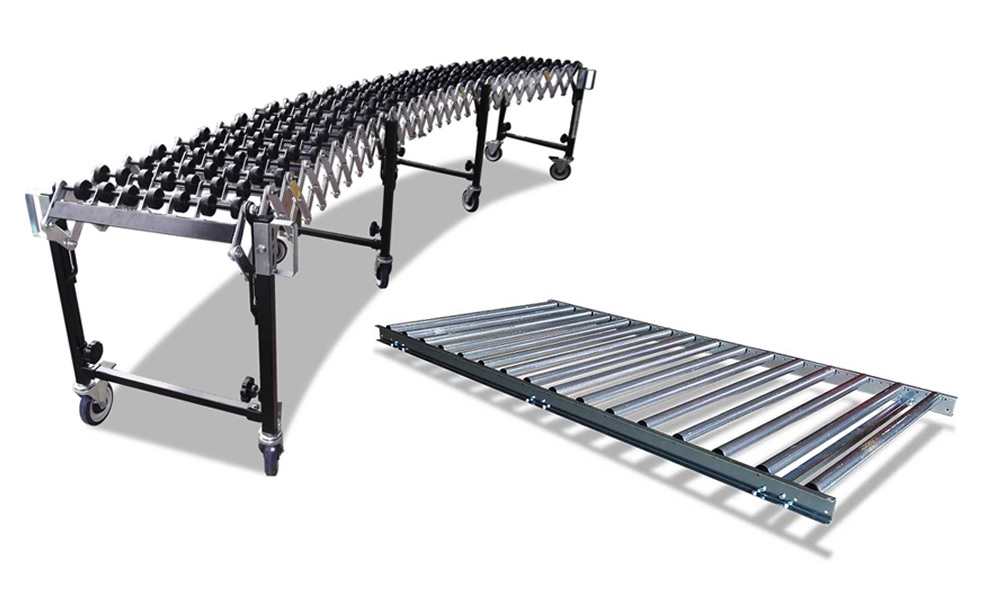Heavy Duty, Production-Line Conveyors
The roller conveyors with their double ball bearing zinc plated steel rollers have very little requirement for maintenance as they are a solid construction. Their modular design makes them easily extendable by adding more sections to the conveyor and the pre-punched zinc plated side frames allow for adjustment in the conveyor spacing where required.
Roller Conveyors
The roller conveyor stands are either fitted with castors or they can be bolted to the floor. The roller conveyors can be placed directly on the floor for conveying pallets to ease the strain on workers backs and limbs but the roller conveyor stands, which come in 4 different widths, are height adjustable and support the standard roller conveyor frames.
Flexible, Expanding Conveyors
The flexible conveyors extend and bend to a 90 degree angle. Their high quality finish, made in Italy makes them a very durable and solid flexible conveyor which allows for greater efficiency and with the flexibility, gives greater production line options. Ideal where the production line needs to be able to turn a corner and deliver goods smoothly in tighter spaces.
Flexible Skate Conveyors
The flexible skate wheel conveyor is flexible and expandable and is easily stowed away when not in use. Very easy to move around with the skate wheels on the conveyor. There are two models available of different lengths, the longest expanding to up to 3700mm. A great option for warehouse and factory conveying and they can be stowed away making them compact and convenient when not in use.
What are Roller Conveyors used for?
Any of these flexible, expandable or table conveyors are very useful and convenient conveyors for moving stock of various kinds in any industry where goods are conveyed from one area to another such as in the mining industry, parcel handling, pallet handling, sorting, agricultural industry, food production, and scrap yards. All these industries and more need easy conveyance of their products, whether they be light and perishable or heavy and awkward to handle.
Safety Guarding for Conveyors
Conveyors always need to be safely guarded as there are lots of moving parts, especially underneath the conveyor where workers may be able to access the moving rollers. Workers need to make sure all clothing, hair and other items are kept well clear of the moving rollers on the conveyors. Keep areas around the conveyors clear so workers are not liable to trip or fall onto the conveyor. All the flexible conveyors, and roller conveyors are safe to use with correct training and sensible reliable staff in the operation of these various conveyor types.

